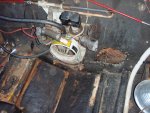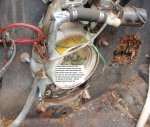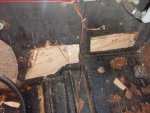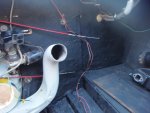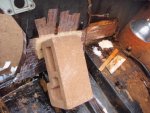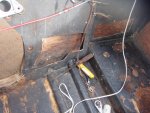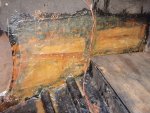Re: Is Patching this Transom Possible?...or safe?
Here are Steve's (Rot Doctor) comments about why this repair is safe...and sane....:
CPES is thinned epoxy. I have no argument there. But is definitely
NOT "no good".
I've read the threads you've given me, and as far as I can tell,
there are several arguments against using thinned epoxies. 1., West
Systems published an article saying not to, 2., I've used thinned
epoxies like Git Rot and they didn't work, and simply, it won't work
(no reason given).
I'll dismiss the last one, and concentrate on the other two. First, I
agree that Git Rot doesn't work well. There are several reasons, but
I'd like to point out that Git Rot is NOT a thinned epoxy. We
compared Git Rot to our CPES, and found CPES significantly better.
Git Rot doesn't penetrate nearly as well as CPES. We are convinced
that this is the key to a durable repair to rotted wood.
Secondly, West Systems says that you shouldn't. West Systems is a
great company, if you are not going to use our epoxies, which I feel
have certain advantages over theirs, I have no problem endorsing
their resins. And for the applications that they are discussing in
the article, I would agree. One shouldn't use a thinned epoxy. But in
the article, they are discussing wetting out fiberglass, and coating
good wood. They are *not* talking about treating rotted wood. I would
never advocate using a solvent epoxy to wet out fiberglass. But I am
willing to make an argument for it's use as a primer, especially on
rotted wood, but even on good wood, in many instances.
Their argument that solvent loaded epoxies extend the full strength
time is valid. But that does not mean that the CPES doesn't provide
benefits which a 100% epoxy cannot provide, especially in rotted
wood. Only that you have to wait longer to get these benefits.
Various people were arguing that your repair was only a patch, not a
repair, and that it wouldn't last. Again, no reason given. Logically,
I see two reasons that this would be true. First, if the repair
itself was not as strong as the original, then normal use loads would
cause failure. As epoxies are significantly stronger than the
original polyester resins, then given an equal thickness of material,
I can't see how this could be possible. And in my personal
experience, it simply isn't.
The second reason I can think of is if the rot were to continue
somehow. Technically, even if this were true, then it would be a
failure of the old, un-repaired section, not of the new section. But
even this is unlikely, as the repaired area is no longer a conduit
for moisture to the wood. And even an actively rotting piece of wood
will stop rotting if it is dried out.
Lastly, someone said that it will fail because you can't use
polyester resin over epoxy resin. And this seems to be a common
belief. But an erroneous one, in our experience. It is true that
polyester resins don't stick to things all that well. But with proper
application, polyesters will stick to cured epoxies as well as they
will stick to any other surface. Perhaps this belief got started due
to putting polyester resin over less than fully cured epoxy. I really
don't know.
I am going to send you a sample of our fine sawdust, soaked with our
CPES. To me, it is as hard as plywood, or nearly so. It is actually
more comparable to MDF (medium density fiberboard). I feel that it is
quite sufficiently strong for the intended purpose. But you can be
your own judge. Given what you have done, I have every confidence
that your repair will be quite durable.
It is ridiculous for anyone to say that they *know* that the poly
repair will eventually fail. There is just no way that anyone can
know that for certain. It will fail if the stress of operation
exceeds the bond strength of the repair. Which I do *not* think will
happen.
I've been doing fiberglass repair since I was 17. Using both
polyester resin and epoxy resin. I've seen the repair job that you
did. And while it would've been a stronger repair using all epoxy
resin, I would be surprised if it ever fails. Sometimes the inner
skin is a structural part of the build. But in your case, the inner
skin was so thin that it's purpose was more for moisture protection
than strength. The structural part of the repair was done with epoxy,
which is much stronger than the original.




















